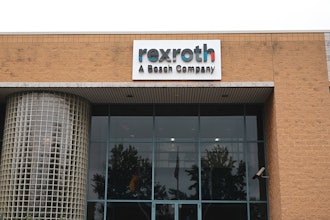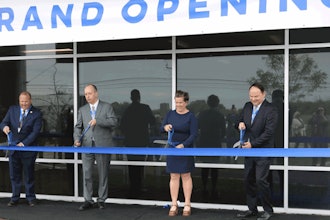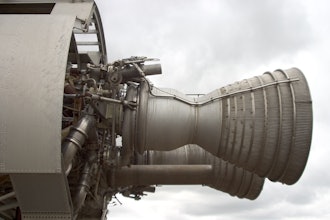
 Gary Amos
Gary AmosWho would have thought that one of the nation’s oldest industries would be a leader in innovation today? From Henry Ford’s mass production to Toyota’s use of LEAN manufacturing methodologies, the automotive industry has a history of leading the way in manufacturing development. Yet, even this highly-automated industry is seeking more efficiency and savings as it adapts to the digital transformation.
New research by Siemens estimates that annual manufacturing productivity gains from the digital transformation will total between 6.3 percent and 9.8 percent of overall revenue by 2025. The manufacturers that adapt to this new digital landscape will put themselves at a competitive advantage that will promote sustainable growth. However, many manufacturers will lack access to financing and the digital skills in the workforce necessary for a successful transition.
With 75 percent of manufacturing firms having fewer than 20 employees (Source), many industrial enterprises will require strategic financing options to get projects off the ground. Specialist financing techniques can make the transition to next-generation digital technology affordable and sustainable in a way that alleviates cash-flow and working capital pressures.
There are three ways financing can make the transition to next-generation digital demands sustainable, including extending payment terms, retrofitting equipment and enabling digitalization beyond a piece of equipment.
No. 1 - Financing can extend payment terms to provide manufacturers more operational and capital flexibility.
Extended Payment Terms (EPT) has become increasingly valuable for manufacturers, as it can be tailored to fit individual needs and allows up to 180 days to submit payments. As a result, with EPT, manufacturers have the flexibility to pay off their loan without impacting their bottom line.
Today’s manufacturing employees need to keep pace with consumer demand for products that are intelligent, responsive and connected. With more capital flexibility provided through programs such as EPT, manufacturers can allocate budget to both hire and train the next generation of skilled workers, which is becoming increasingly critical as baby boomers are retiring from industry jobs at a rate outpacing other sectors. In fact, 3.5 million new manufacturing jobs are expected over the next 10 years—with 2 million predicted to remain unfilled (Source). Once manufacturers have extended payment options, they can leverage financing to address aging manufacturing systems and assets.
No. 2 - Financing upgrades for existing assets helps increase longevity for customers in a more cost-effective way.
According to the Bureau of Economic Analysis, the average age of manufacturing assets in the United States is close to 20 years. Rather than replace these outdated assets, manufacturers can use a process called “retrofitting.” This is when a financier works with a customer to insert new parts into existing systems to increase longevity. Such a transaction can also incorporate a performance guarantee as part of the solution, ensuring a specific outcome associated with the new parts installed. Retrofitting allows manufacturers a more cost-effective solution, and, if involved as part of a performance contract, can even guarantee outcomes if agreed upon with the financier. In addition to retrofitting existing assets, financing can empower manufacturers to embrace digitalizing operations.
No. 3 - Financing enables savings through digitalizing operations beyond a single piece of equipment.
With extended payment options and increased longevity of existing assets, manufacturing firms have a better financial opportunity to embrace the digital transformation. Financing solutions can make advanced technology more accessible to manufacturers and their customers, as well as provide an alternative to traditional credit lines. Innovative and future-facing financing models can even provide the financial freedom to truly make digital enterprise happen.
Digital growth promises to deliver great value across the manufacturing continuum. From increasing operational flexibility through extended payment terms, retrofitting equipment through outcome-based financing or enabling digitalization beyond a single piece of equipment—the savings incurred from the digitalization of manufacturing assets will enable organizations to bring further efficiencies to the production line. Industrial customers, if willing to take the risk, can take advantage of these savings to get their firms on the path to sustainable growth.
Gary Amos is CEO of Siemens Financial Services Commercial Finance Americas.























